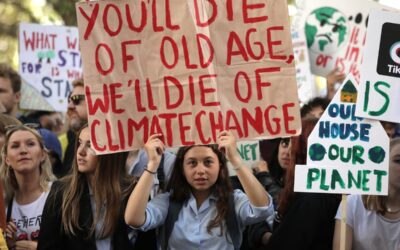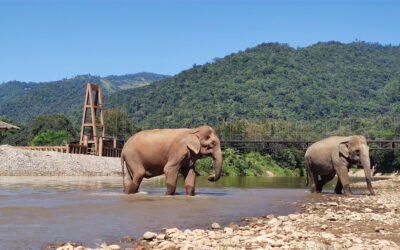The FT’s big front page splash today (“Fears grow over global food supply“) has sent a ripple of interest through the wider media – expect to hear a lot about the issue on the broadcast media over the course of the day. So is this a repeat of 2008? In a word, no – though it could yet become one, and even if it doesn’t, we need to regard this as a wake-up call. Here’s a quick summary.
What’s going on? Wheat prices are soaring. A year ago, a tonne of wheat cost €141; today, it costs €231, and most of the rise has happened over the last few weeks. Meanwhile, meat prices have hit their highest level in 20 years. The overall FAO Food Price Index rose 5% during August, and is back to where it was in late autumn 2007 (when the food price spike was well underway) – though it’s still some way off its peak during summer 2008.
So why are prices rising? For wheat, the main driver has been adverse weather – principally in Russia, but also in parts of the EU, Kazakhstan, Australia and Ukraine. The effect has been compounded by export restrictions, again with Russia (which has banned wheat exports outright) the main driver. On meat, the issue’s more to do with demand (especially in emerging economies, where people are increasingly shifting to meat-rich ‘western diets’) – though the supply side has also lagged.
But why the sudden spike in media coverage? Media interest has stepped up over the last 24 hours because of two things that just happened: a food price riot in Mozambique that left 7 dead, and Russia’s announcement that it will extend its export ban on wheat for 12 months.
Is this 2008 all over again? No. Despite the adverse weather in Russia and other countries, the world as a whole is on course for a bumper crop this year – the third highest on record, according to the International Grains Council. Stock levels are also much more comfortable than they were in 2008, providing more of a buffer. And the 2008 food spike was greatly amplified by a concurrent oil price spike (reaching $147 at the top), which made food more expensive by upping fertiliser, energy and transport costs, as well as making it more attractive to put crops into biofuels. Today, by contrast, oil is at $76 – still high, by historical standards, but a long way off 2008 levels.
So there’s nothing to worry about? No, that’s not the case either. The situation could still get a lot more serious – if more harvests get damaged by extreme weather, if price bubbles develop through investors going long on futures markets, if the oil price starts rising, or if more countries start implementing export bans or restrictions.
Looking to the longer term – with food demand forecast to rise 50% by 2030, even as trends like water scarcity, climate change, intensifying energy security risks and competition for land constrain supply growth – there are strong reasons to think that 2008 wasn’t “just a blip”.
Most of all, remember that for many poor people, the food price spike didn’t end in 2008. The number of undernourished people in the world was 850m before the food spike; today, it’s over a billion – not surprising, when you reflect how high food prices have been since then by historical standards (again, see the FAO Food Price Index), or on the fact that poor people typically spend 50-80% of their household income on food.
So what do we need to do? See The Feeding of the Nine Billion for a full answer to this – but the short answer is, a) invest in a 21st Century Green Revolution that produces more food, more sustainably, more resiliently, and in a way that works for small farmers; b) scale up targeted social protection systems to protect people like the ones rioting in Maputo (and which make a lot more sense than price controls or economy-wide subsidies); c) start getting serious about making international agricultural trade more resilient, especially through better crisis management mechanisms and probably including new rules against sudden export restrictions; and d) do a serious global deal on climate change. And get a move on.
Update: FAO has called a summit meeting for 24 September to discuss rising food prices, probably to be held at their HQ in Rome. That’s right, another FAO summit – because the last ones produced so many concrete outcomes.
And yes, they’ve managed to organise it for two days after the UN MDG summit, and slap in the middle of the UN General Assembly’s main annual debate (neither of which are due to take place in Rome, last time I checked).
And we’ll have more from FAO on the subject of UN system coherence a bit later in the programme.



